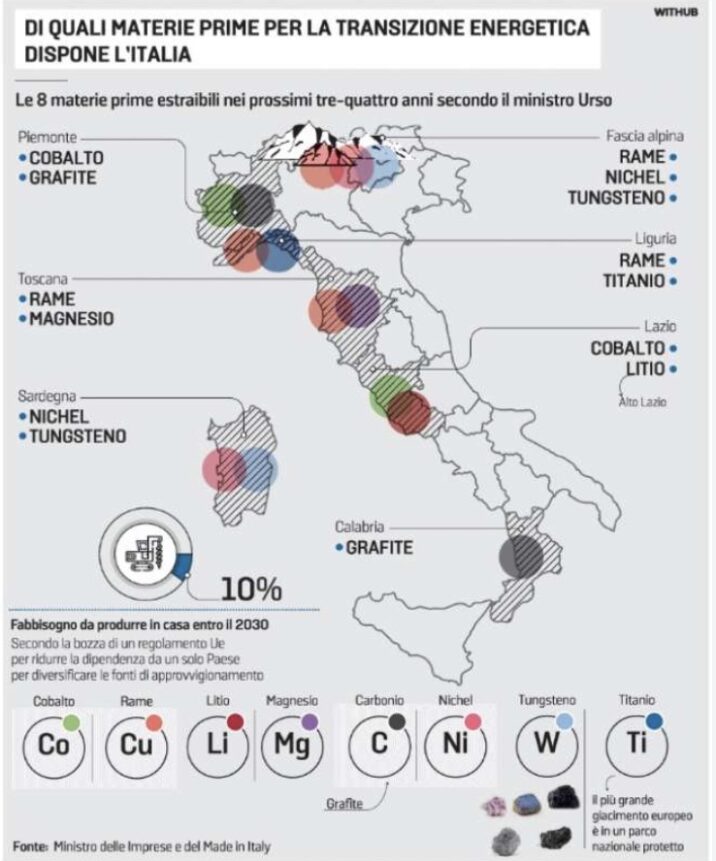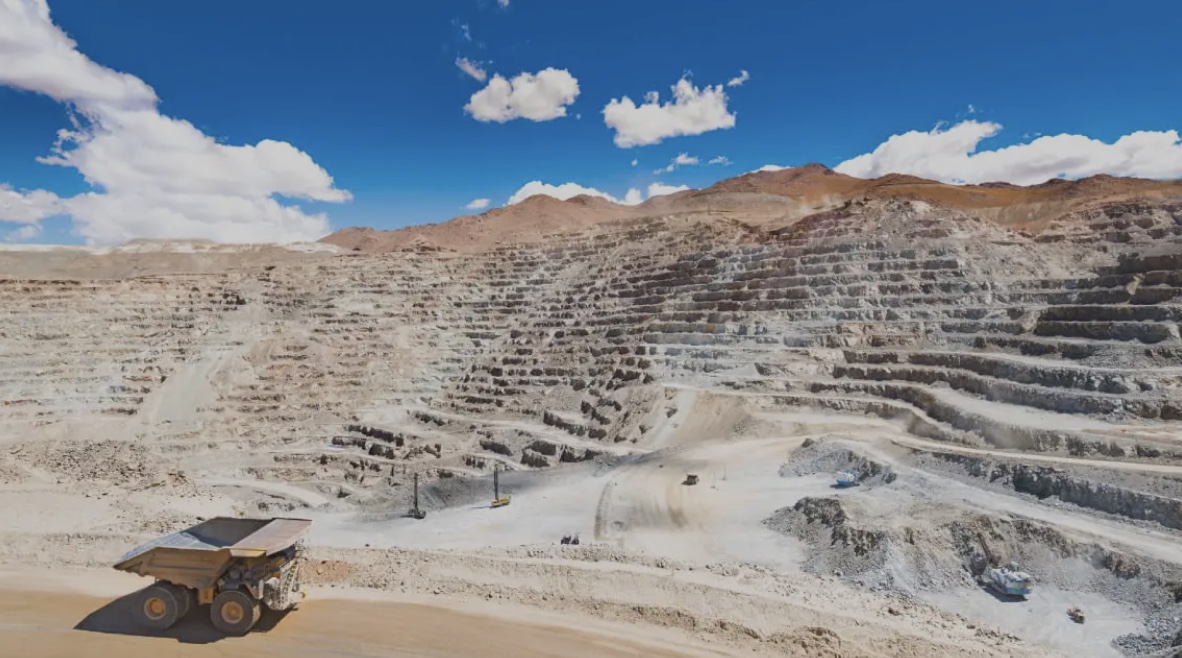The minister of Made in Italy Adolfo Urso, in hearing at the Senaro: “The European Union depends almost exclusively on imports (critical rare materials ed) often concentrated in a small number of third countries for both extraction and processing , China alone currently guarantees 49%, i.e. half, of the total effective need for global critical raw materials”.
Ecological and digital transition require new critical materials whose extraction takes place in an important way in Africa where Chinese companies have now assumed the pre-emption. In a world that runs at different speeds, it is necessary to move in advance to avoid strategic dependencies as happened with Russian gas. In order not to depend on Africa, China and to some extent even India, the future of the supply of rare earths must be redesigned now. For this reason, the Ministry of Made in Italy and the Environment are developing a mapping of the extraction sites present in our country that have been closed for over thirty years. As regards extraction and processing, there will be new regulations ready at the end of 2023.
The Minister of Made in Italy Adolfo Urso pertando reported in the hearing to the Senaro of the EU regulation on critical raw materials: “the EU has defined 34 critical raw materials, of which 16 also considered strategic due to their relevance in the ecological and digital transition, intended for aerospace and defence, but also important due to the gap between global supply and expected demand. In our country, we possess 16 of these 34 critical raw materials indicated, in particular those for electric batteries and solar panels, but these are found in mines that were closed over 30 years ago, due to their environmental impact or lower margins of I earn".
Subscribe to our newsletter!
The minister points out that "it is necessary to invest and reactivate this potential. The proposal for a Community regulation asks us to reopen the mines and to make an effort in terms of recovery and investment in technological capacity; it is a challenge but also a great opportunity".
“On investments, the national strategic fund could also come in handy, set up with the Made in Italy bill with a one billion endowment, which has also attracted great interest from foreign sovereign funds and on which we think we will be able to implement the resources in the short term. At present, Italy has no mining activity and there are no mining enterprises. We closed the mines 30 years ago“, specifies the minister.
The 34 critical raw materials according to the EU
The "critical raw materials" established by the EU are 34: antimony, arsenic, bauxite, baryte, beryllium, bismuth, boron, cobalt, coking coal, copper, feldspar, fluorite, gallium, germanium, hafnium, helium, earth elements heavy rare, light rare earth elements, lithium, magnesium, manganese, natural graphite, nickel - battery grade, niobium, phosphorite, phosphorus, platinum group metals, scandium, silicon metal, strontium, tantalum, titanium metal, tungsten, vanadium . Of these “critical” raw materials, 16 are considered “strategic”: bismuth, boron – metallurgical grade, cobalt, copper, gallium, germanium, lithium – battery grade, metallic magnesium, manganese – battery grade, natural graphite – battery grade, nickel – battery grade, platinum group metals, rare earth elements for magnets (Nd, Pr, Tb, Dy, Gd, Sm, and Ce), silicon metal, titanium metal, tungsten.
The deposits in Italy
Rare earth deposits, writes Il Sole24Ore, are found above all in the regions of the Alpine arc, from Friuli to Piedmont, and then in Liguria, Tuscany, Northern Lazio, Abruzzo and Sardinia. Cobalt is found in Friuli, magnesium and copper are found in Veneto. Cobalt, manganese, magnesium, baryte, copper have been found in Trentino, copper, baryte, cobalt, beryllium are found in Lombardy. Under the Piedmontese Alps there are cobalt, graphite and manganese. Liguria has the largest Italian deposit of titanium, on the mountains of the Beigua park, between Genoa and Savona, as well as copper, graphite, manganese and barite. Tuscany is rich in copper and antimony, and also possesses manganese and magnesium. In northern Lazio there are some deposits of cobalt, manganese and barite. Barite is also found in Sardinia, together with copper and antimony. In the Abruzzo Apennines there are several deposits of bauxite and one of manganese. Bauxite is also found in the north of Campania and in various areas of Puglia. In Calabria there are manganese, barite and graphite, in Sicily antimony and manganese.

